Galleries
Art Buyers Stopping Off in Zurich on Their Way to Art Basel Found Heady Exhibitions and a Market in Transition: It’s Now a Buyer’s Game
We headed to the Swiss financial center to take a finger to the wind before Art Basel.

We headed to the Swiss financial center to take a finger to the wind before Art Basel.

Naomi Rea

If you listen closely on the terrasse of the Baur au Lac hotel, a decadent gem bordering Lake Zurich, you will learn something about the whims of the ultra-high-net worth individuals who gravitate to the Swiss tax haven. If you do it on the eve of Art Basel, you might learn a little something about the art of the deal.
Huddled at its tables are art advisors exchanging information with auction house executives on primary and secondary market pricing, dealers rating ski resorts as a prelude to nailing down a seven or eight figure sale, and collectors bragging, loudly, about their museum affiliations.
Art-world insiders have been making a stopover in Zurich on their way to Art Basel for decades, but the phenomenon has only recently been formalized by coordinated gallery weekend programming enlivening the city, courtesy of Zurich Art Weekend, which is in its sixth edition.
The event has been growing in importance in recent years, and visitors from all strata of the art world appreciated the opportunities to see art in a variety of non-fair contexts, whether that was an exhibition of Giacometti and Dali at the Kunsthaus Zurich, Mandy El-Sayegh’s psychoanalytic installation in Wasserkirche church, or a tour of collector and local publishing magnate Michael Rignier’s home.
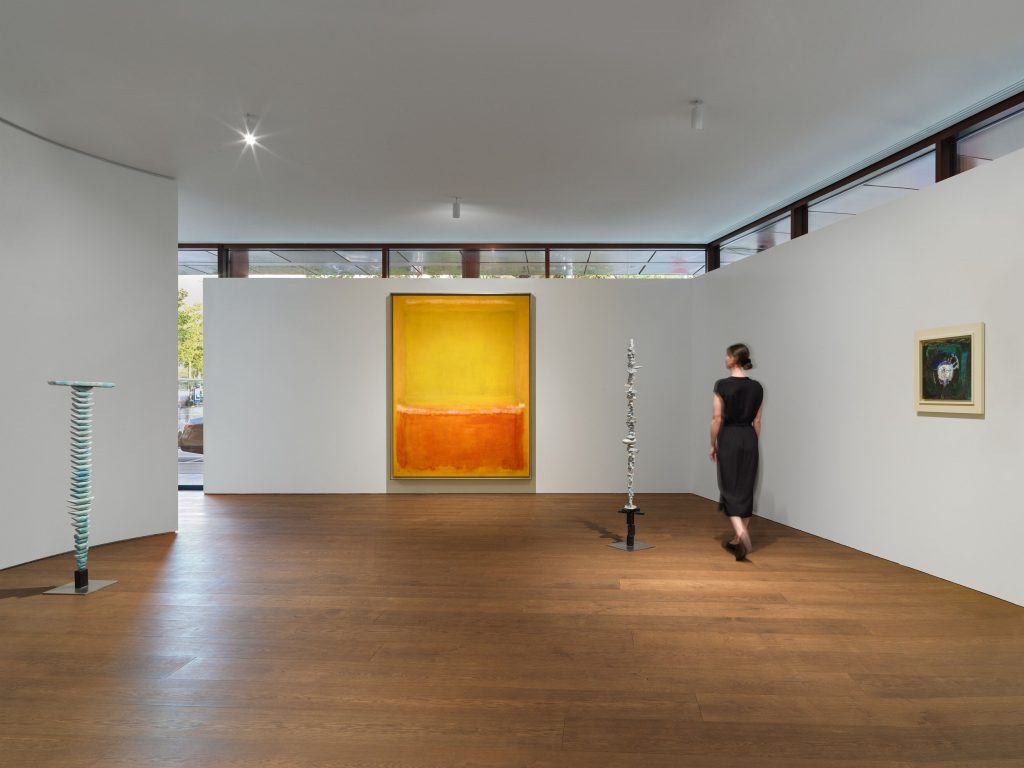
Installation view, “The God that Failed: Louise Bourgeois, Barnett Newman, Mark Rothko,” curated by Philip Larratt-Smith, Hauser & Wirth Zurich, Bahnhofstrasse, until 16 September 2023. © The Easton Foundation / 2023, ProLitteris, Zurich © The Barnett Newman Foundation, New York / 2023, ProLitteris, Zurich © 1998 Kate Rothko Prizel & Christopher Rothko / 2023, ProLitteris, Zurich. Photo: Stefan Altenburger Photography Zürich
But for industry insiders, it is also a chance to get an in-person view of work by artists that will be on view at Art Basel this week. At the signal Bahnhofstrasse space of Hauser and Wirth, whose original gallery was founded in Zurich in 1992, was an exhibition of Louise Bourgeois’s totemic post-war “Personages” sculptures, one of which will also be on view at their booth at Art Basel this year, with an asking price of $7.5 million. Shown alongside paintings by Barnett Newman and Mark Rothko from the same period, the three artists were in each others’ orbit, pivoting at around in the 1940s and ’50s from biomorphic figuration to abstraction. The title of the exhibition “The God that Failed” captures some of the existential pangs of that post-war period and feels highly relevant today.
At their two spaces in the Löwenbräu, a converted brewery which is now a gallery complex, Cindy Sherman’s new digital collages of her own face, unrecognizable due to make-up and digital manipulations warping her features, give us an absurd version of a digitally retouched image in a magazine, or a FaceTuned Instagram post. The gallery will also bring one of these large prints to the fair, priced at $200,000.
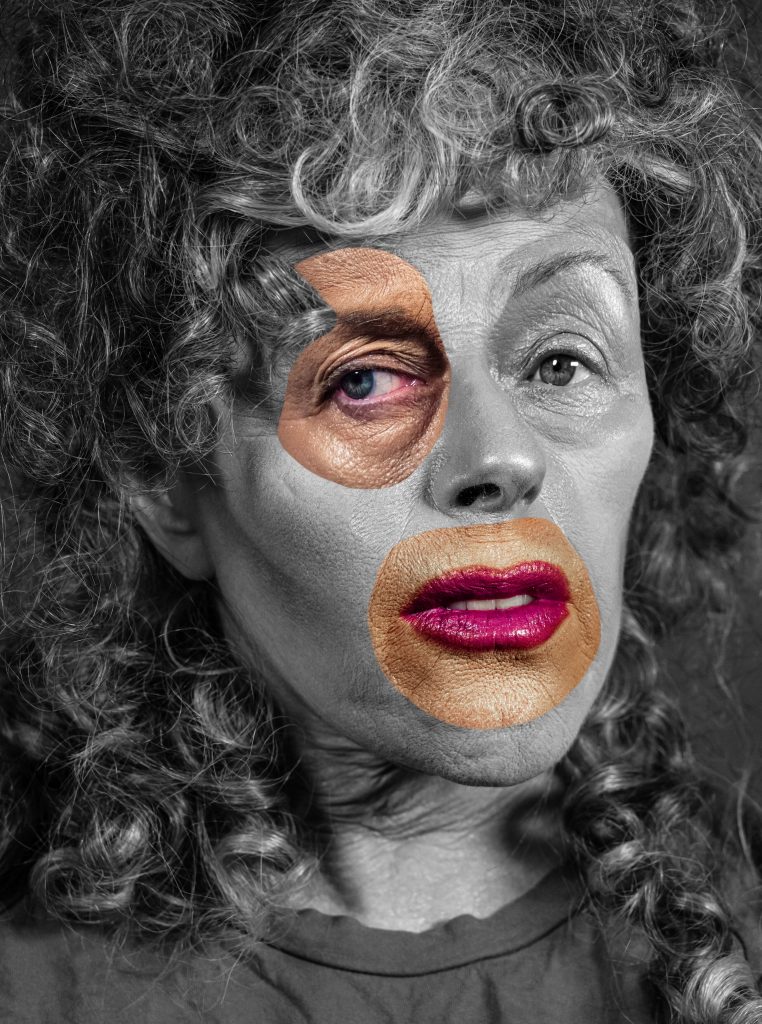
Cindy Sherman, Untitled #652 (2023).©Cindy Sherman. Courtesy the artist and Hauser & Wirth.
This year in particular, as the public art market passes through a wider recalibration, the deals that are clinched in Zurich are more important than ever. Interest rates have risen, inflation is up, and there is uncertainty about the future. Some collectors have retracted from the market, and after a lukewarm Frieze New York and an under-performing auction cycle in May, there is talk of an art market softening.
With the extortionate overheads involved in participating in an event like Art Basel, there’s a lot at stake for galleries over the weekend in the neighboring city. And given that Zurich is a calmer vis-a-vis the rush of events to come in Basel, there was warming up being done in the galleries, the vast art warehouses of Crozier or Haas & co., over spritzes at the Baur, veal at the art-filled Kronenhalle, and beneath (or sometimes atop) the rafters at the historic Oepfelchammer tavern.
“We always come early, we always do Zurich,” U.S. advisor Kimberly Gould told Artnet News. “We do a hell of a lot of business here, it is key to making the fair really successful.”
However, with a more cautious mood, buyers’ wallets will only be drawn out for an A+ work. The general sense of optimism among those on the acquiring end of the deal signals a decisive shift: the art market is no longer a seller’s game. Those who sat out the price-gouging of recent years will be returning to the market in search of a good deal (such as an attractively-priced Warhol “Mao” work being offered by Jeffrey Deitch at Art Basel for $10 million, which last sold for $14.5 million at Sotheby’s in 2015). Gould pointed out that the financial collapse of 2008 was her best sales year ever.
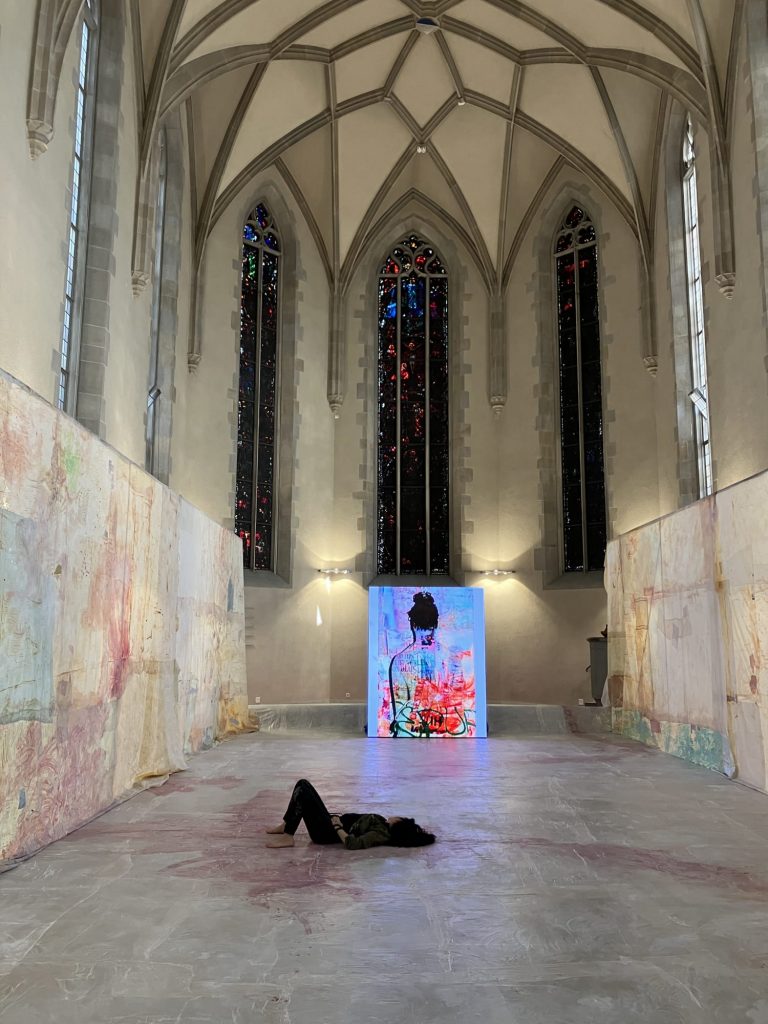
Mandy El-Sayegh at the Wasserkirche, Zurich. Photo © Mandy El-Sayegh. Courtesy Thaddaeus Ropac.
So what does a buyer’s market look like? While some galleries are standing firm on the asking price for the hottest artists, others are offering discounts slightly larger than usual. Stringent terms and conditions attached to the sale of an artwork are also falling away: the practice of BOGO, where you must give a work to a museum, is not as regularly expected; galleries are no longer leveraging blue chip emerging artists to force support to the rest of their programs in packaged deals; more concessions are being made to accompany a significant purchase. And where it used to be vital for the gallery board or owner to approve a sale at a blue-chip gallery, now, anyone can sell. “There has been a return to focus on the sale rather than who it is going to,” Gould said. “We’re finding we have to make less of a case for our clients.”
Which is not to say that galleries are in trouble. Demand remains strong on the primary market, even though waiting lists may have shrunk, the right works are still flying out the door. “The numbers have gone down, the speculators have disappeared, and only the true collectors are left standing,” U.S. advisor Wendy Goldsmith said.
In spite of the slow-down, deals were being closed over the weekend. “On that super iconic high end, when there is a general retraction in the broader markets, those deals are done sotto voce away from the public eye,” advisor Todd Levin noted.
Indeed, there were reports of more-than-usual private market activity in Zurich. David Schrader, Sotheby’s head of private sales, has been coming to Zurich for decades, first as a collector and now in a business capacity. “2020 was our best year ever for private sales, when people more hesitant to take the risk at auction came to us in a private capacity, and we are potentially in a similar moment this year,” he told me.
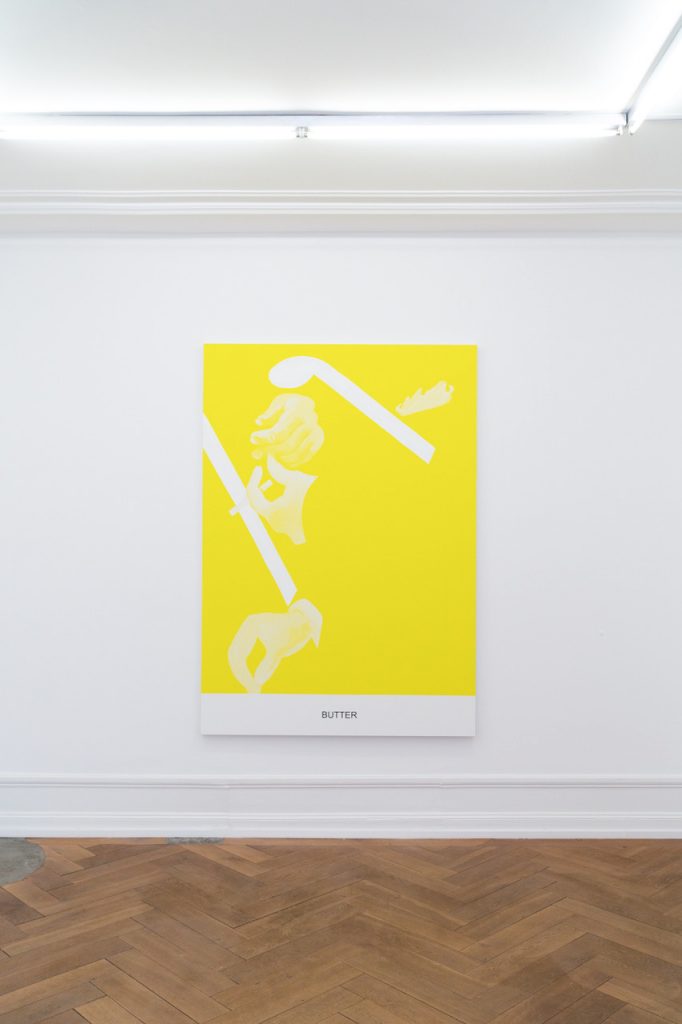
John Baldessari The Yellow Series: Butter (2016). John Baldessari. Courtesy Estate of John Baldessari. Courtesy Sprüth Magers.
But of course, the gallery weekend is not just about sales. While I did run into Art Basel’s new CEO Noah Horowitz, I also ran into Venice Biennale curator Cecilia Alemani, as well as Serpentine Galleries’ artistic director Hans Ulrich Obrist. Artists were out in force, including Camille Henrot (who is showing new work with Hauser and Wirth in the Swiss hamlet of St. Gallen) and Iranian photographer Shirana Shahbazi, who was showing some exquisite hand-colored silver gelatin prints in colorful sculptural ceramic frames at Peter Kilchmann; some cinematic images of women submerged in water, and tricky abstracted geometric objects.
Other highlights included John Baldessari’s exhibition at “(FOOD)” at Mai 36 Galerie, a selection of witty examples of late artist’s work relating to food culture, spanning from 1970 to 2019 (and yes, there was some spagel); Peter Kilchmann’s explicit exhibition by Paul Mpagi Sepuya at his Zahnradstrasse space; and Tschabalala Self’s paintings incorporating fabric scraps and idling subjects fusing with the furniture at Eva Presenhuber’s Waldmannstrasse space.
On the younger end of the spectrum, Galerie Gregor Staiger was showing enigmatic new paintings by Deborah Joyce-Holman. At Fabian Lang, Idris Kahn and Annie Morris showed together, choosing works responding to the palette of JMW Turner’s painting Snowstorm, Avalanche, and Thunderstorm.
Speaking ahead of the opening, Lang said he had yet to feel any softening; that international and Swiss audiences were fighting to acquire the works, priced between £75,000 and £175,000 ($94,000 and $220,000). He’s also cautiously optimistic about Basel; while not showing in the main fair, he is bringing artist Kilian Rüthemann among others to the young art fair in a bunker, June, and one of Rüthemann’s silicone sculptures at the Basel Social Club, a new event which debuted in a 1930s villa last year and this year graduated to a former mayonnaise factory (and the main fair’s VIP program).
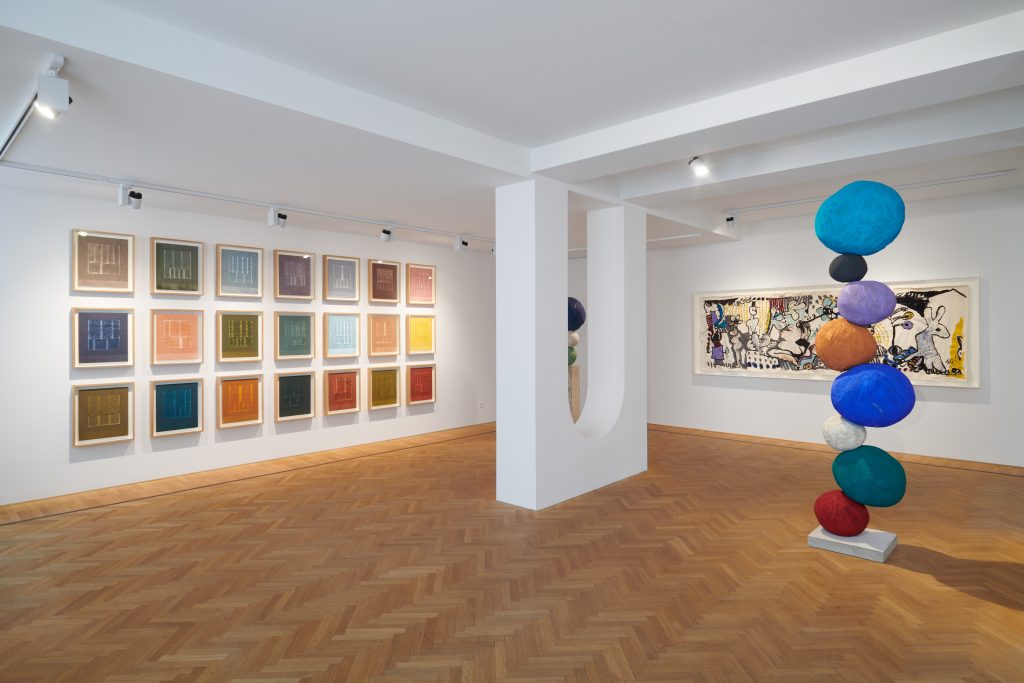
Installation view, “After The Storm: Idris Khan and Annie Morris. Fabian Lang.” Courtesy Galerie Fabian Lang © Galerie Fabian Lang, Zurich.
“Zurich is not always the most busy or lively city throughout the year. But people do engage, and do make the effort to come out and see great exhibitions, and initiatives like Zurich Art Weekend help create more dates in the year for us to come together,” Lang said of the event. “The second reason it is so lively is that Art Basel brings with it an international crowd. We put the biggest effort into our exhibitions—at fairs it is about selling—and ultimately this is the moment to see exhibitions, and we make a point to bring our international program to Zurich to place internationally in collections.”
Now, at a time when we’re all processing the collective trauma of the last few years, the art weekend understands that it is vital to provide us with opportunities not just to buy art—but to feel it.